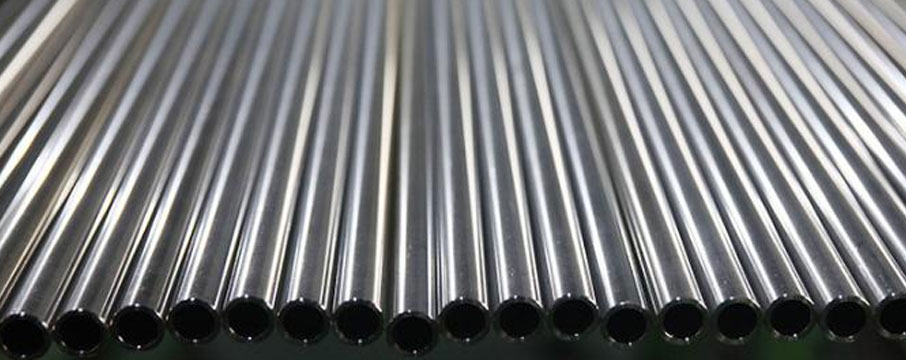
The compositional difference between 316 and 304 materials is the primary distinction. While 316 L material has a low carbon percentage, 316 has a high carbon content. In numerous applications across many different industrial applications, these materials can be utilised interchangeably. The material's composition consists of 18% chromium, 8% nickel, and 4% molybdenum. The molybdenum interaction enables the material to cross resistance to conditions with high concentrations of chloride ions and seawater.
The material is preferred applications in the seawater corrosive components and in brackish water applications. Given that the composition of the two types of stainless steel is nearly identical, the price difference between them is quite little. Maximum carbon concentration for the 316 L material is 0.03 percent of the overall composition. Both materials are compelled into stainless steel varieties that have a limited tolerance for corrosion and strength. They are also very strong in applications requiring high temperatures. Because it contains less carbon, the 316 L material is better suited for welding operations. Due of the extremely low carbon content, grain structure cannot form during welding as a result of chloride precipitation. In demanding welding applications, this feature is preferred. Since welding applications must be more durable, they must
The 316 L material's low carbon concentration also allows for enhanced product toughness. The 316 L grade of stainless steel's high toughness aids in the materials' resistance to abrasion. The316 and 316l comparison enables customers to choose the appropriate product categories. Both materials can be used to make flanges, pipelines, pipe fittings, bolts, nuts, and several other metallic goods. For building purposes, 316 L material is ideal; however, 316 material can also be utilised with annealing to withstand welding deterioration. Little is present.difference between 316 and 316l corrosion resistance chromium, nickel, molybdenum, manganese, sulphur, and silicon are all present in equal levels in both materials' compositions. Although the 316L material has a slightly higher level of corrosion resistance because to its reduced carbon content, this is not what distinguishes these two classes.
Due to the composition, there are also modest variations in the mechanical qualities. The yield strength of material 316 is 30 ksi, compared to 25 ksi for material 316L. Both materials have tensile strengths of 75 and 70 ksi, respectively. Both materials have a maximum hardness of 95Rn and an elongation rate of 40%. The mechanical qualities of the 316L material are somewhat improved, and less carbide precipitation occurs during welding, making it a better choice for medical implants than the 316 material. Both materials are suitable for use at temperatures as high as 870 degrees Celsius. Because 316L is only needed in a small number of particular applications, 316 is utilised more frequently than 316L. There are further variations of the 316 material, including the F, N, and H versions.
| Grade | UNS No | Old British | Euronorm | Swedish SS | Japanese JIS | ||
| BS | En | No | Name | ||||
| 316 | S31600 | 304S11 | 58E | 1.4401 | X5CrNiMo17-12-2 | 2347 | SUS 316 |
| Grade | Elongation (% in 50mm) min | Strength of Yield 0.2% Proof (MPa) minimum | Strength of Tensile (MPa) minimum | Pipe Hardness | |
| Rockwell B (HR B) maximum | Brinell (HB) maximum | ||||
| 316 | 40 | 205 | 515 | 95 | 217 |
| Grade | C | Mn | Si | P | S | Cr | Mo | Ni | N | |
| 316 | min. | – | – | – | – | – | 16.0 | 2.0 | 10.0 | – |
| max. | 0.08 | 2.0 | 0.75 | 0.045 | 0.03 | 18.0 | 3.0 | 14.0 | 0.10 | |
| Melting Point | Density | Tensile Strength | Elongation | (0.2%Offset) Yield Strength |
| (2550 °F)1400 °C | 8.0 | MPa – 515, Psi – 75000 | 35 % | MPa – 205, Psi – 30000 |
| Grade | C | Mn | Si | P | S | Cr | Mo | Ni | Fe |
| SS 316L | 0.035 max | 2 max | 1.0 max | 0.045 max | 0.030 max | 16.0-18.0 | 2.0-3.0 | 10.0-14.0 | 68.89 min |
| GRADE | JIS | WERKSTOFF NR. | GOST | UNS | EN | BS | AFNOR |
| SS 316L | SUS 316L | 1.4404 / 1.4435 | 03Ch17N14M3 / 03Ch17N14M2 | S31603 | X2CrNiMo17-12-2 / X2CrNiMo18-14-3 | 316S11 / 316S13 | Z3CND17‐11‐02 / Z3CND18‐14‐03 |

